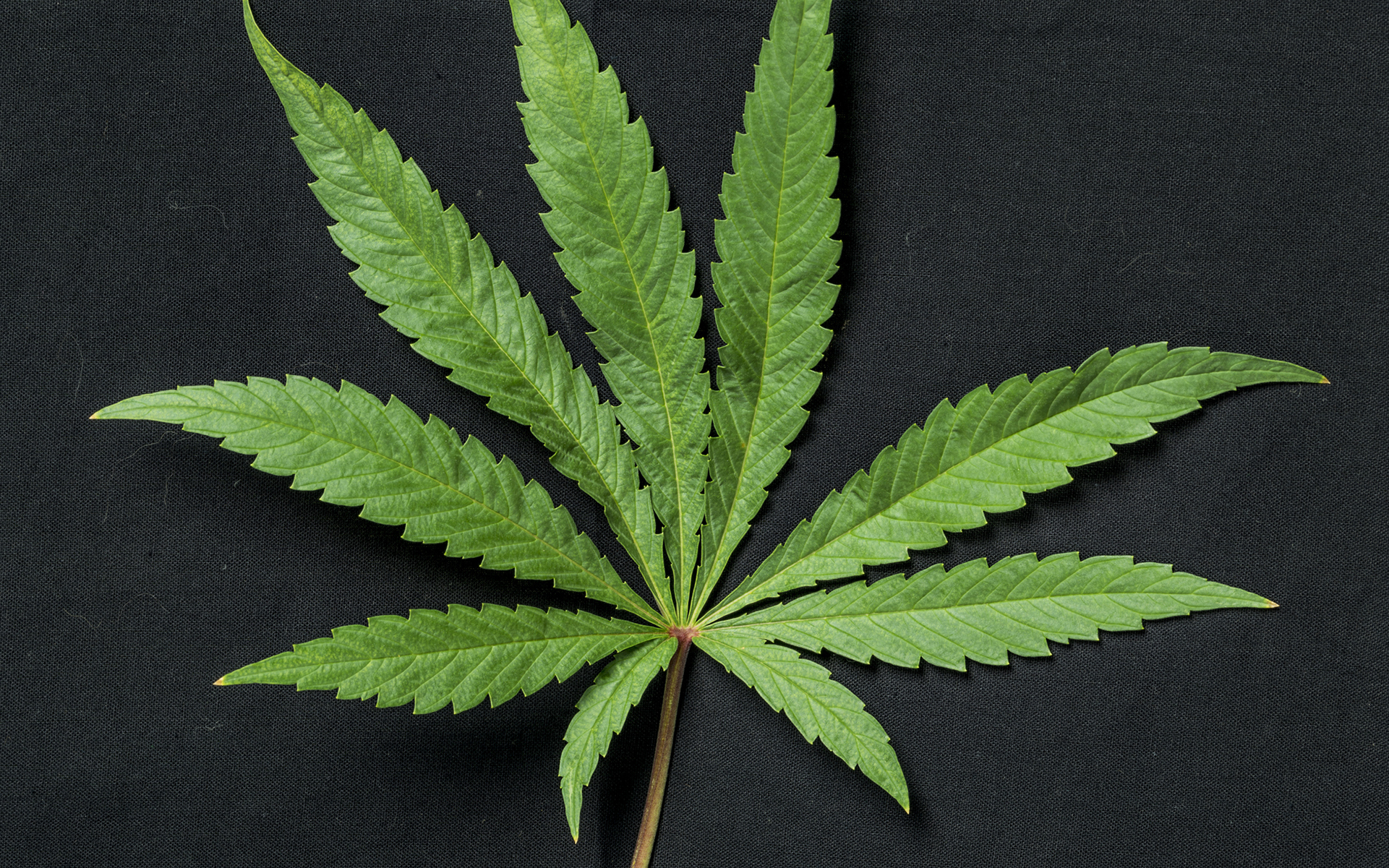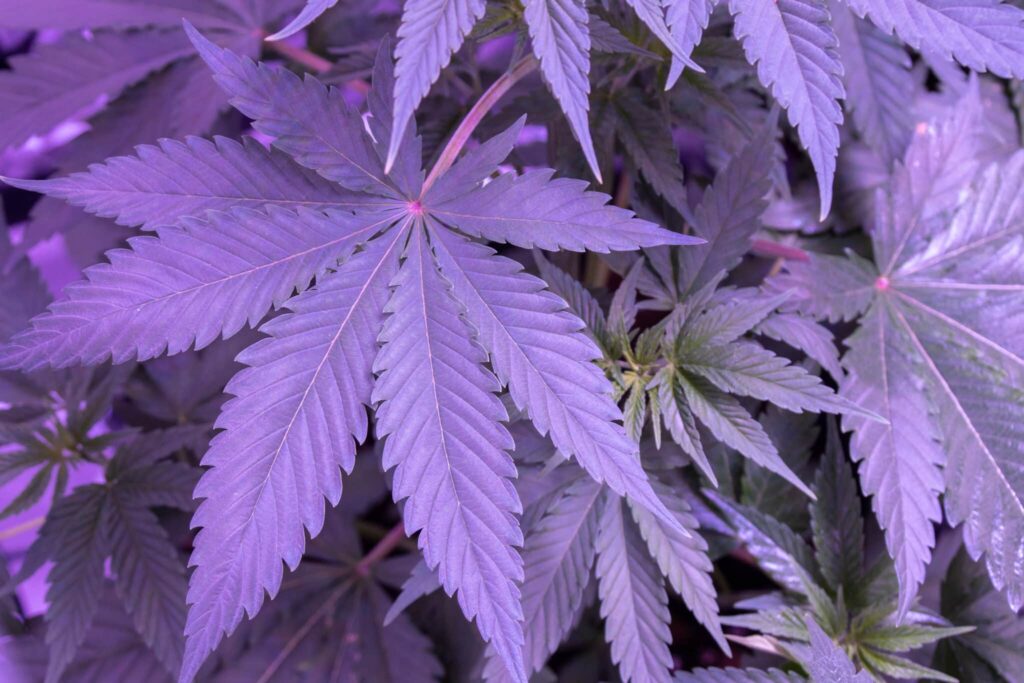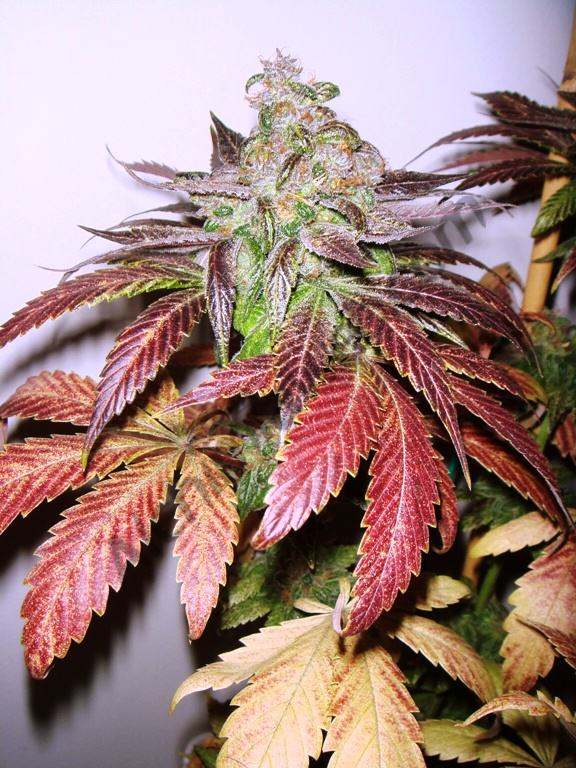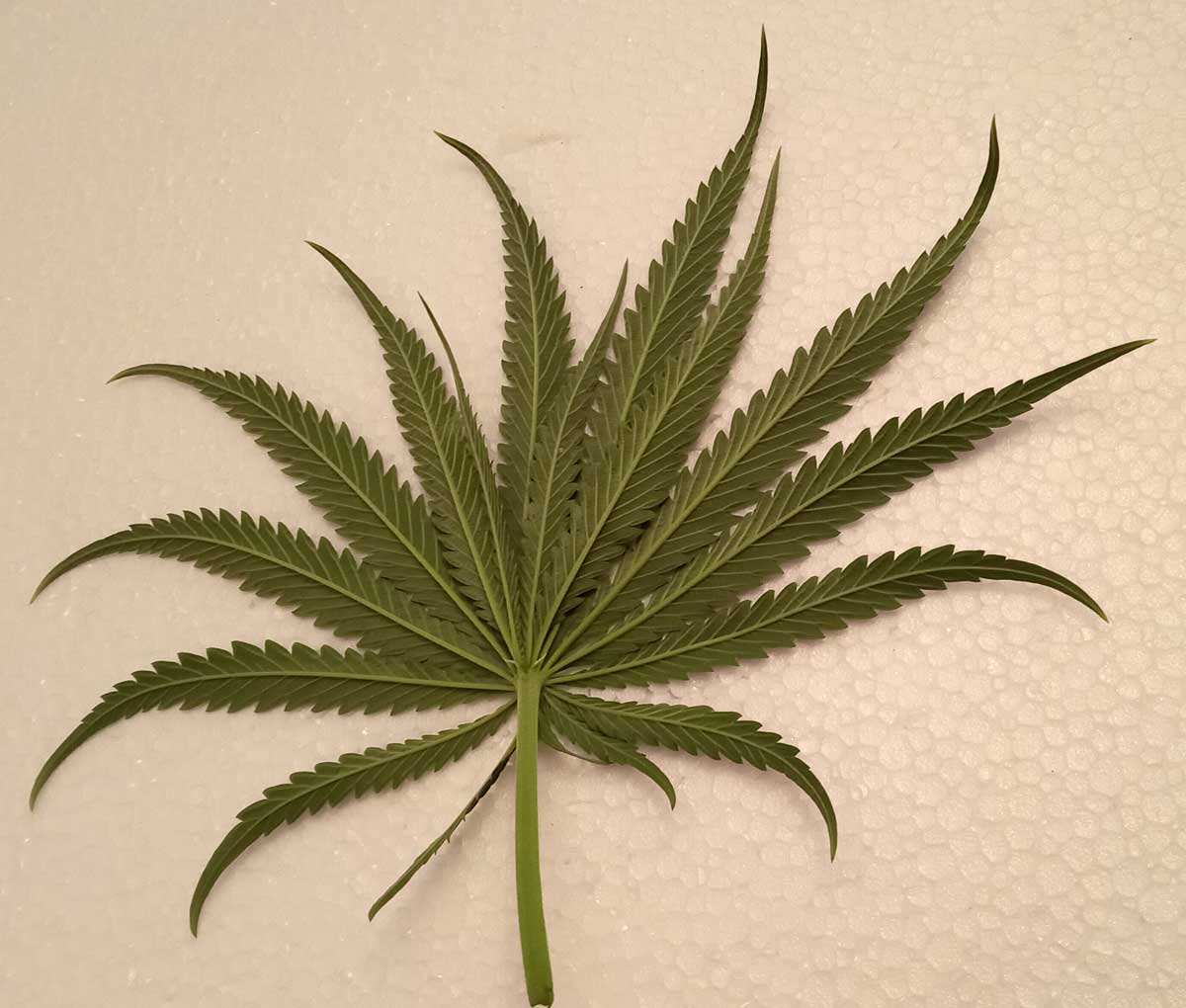Unraveling the Iconic Plant's Biological Marvels, Cultural Significance, and Untapped Potential
For thousands of years, the distinctive leaves of the cannabis plant have captivated human cultures across the globe. With their unique shapes, vibrant colors, and symbolic weight, these verdant botanical wonders have transcended their natural origins to become iconic emblems woven into art, fashion, spirituality, and traditions worldwide. Yet beyond their iconic familiarity lie depths of diversity, science, and untapped potential waiting to be explored and understood. Let's delve into the mesmerizing realm of cannabis' most recognizable feature - its leaves.

IMAGE: Leafly
An Icon Etched in Culture and Consciousness
When most envision cannabis foliage, the archetypal "sprig" shape with its spiral array of slender, serrated leaflets radiating outwards from a central stalk-like outstretched fingers immediately comes to mind. This distinct palmate pattern has become the universal calling card and insignia of the cannabis plant itself.
Yet this single iconic motif represents immense natural variation in expression. Cannabis strains originating from different global regions often exhibit unique leaf structures, shapes, colors, and growth patterns adapted over generations to thrive in their local environments and serve intended cultural uses.

IMAGE: Euphoria Wellness
For example, some cultivars from warm, semiarid climates like those found across parts of India, Africa, and Mexico produce relatively small yet hardy leaves with short, stocky blades as an adaptation to conserve moisture. In contrast, equatorial landrace strains native to lush, humid environments like those found in parts of Thailand and Colombia frequently flaunt long, slender foliage comprised of up to 13 delicate fingerlets splaying outwards to capture maximum sun exposure.
Then you have mesmerizing outliers like "Ducksfoot" with completely splayed webbed leaf patterns or cultivars like "The Black" whose foliage appears almost black from a dense concentration of anthocyanin pigments. Seasoned cannabis connoisseurs can often identify regional strains simply by closely inspecting nuanced leaf characteristics.

IMAGE: Dutch Passion
No matter the variance, many ancient spiritual and cultural traditions incorporated the iconic leaf shape into their art, architecture, and iconography imbued with symbolic potency tied to sacred concepts like fertility, enlightenment, healing, and renaissance.
In ancient Chinese archaeological sites, we find tobacco pipe markings and decorative stamps depicting the unmistakable fan-leaf pattern wreathed in spiritual metaphor and mythic lore. Carvings of cannabis foliage motifs likewise adorned temples and shrines of ancient faiths spanning the Indian subcontinent. And of course, its incorporation into traditional textile arts like batik, tapestry, and embroidery has been practiced for centuries.
This symbolic weight has transcended eras, crossing over into the modern psyche and pop culture zeitgeist. From 1960s-era protest banners to contemporary brand logos, album art, and product packaging - the familiar cannabis leaf icon remains an instantly recognized global insignia for activism and counterculture cool alike.

IMAGE: Grow Barato
A Masterclass in Natural Engineering
Yet for all its symbolic and cultural resonance, the true magic of cannabis leaves reveals itself in the nuances of their innate biological design - a masterclass in natural engineering and adaptive evolution shaped by both human influences and raw environmental forces over millennia.
For starters, the strategic palmate shape with fingerlets arrayed outwards helps to maximize the three-dimensional surface area exposed to available sunlight angles from above. This optimized design boosts the leaves' ability to photosynthesize and fuel robust plant growth.
Similarly, the serrated or "dentate" edge patterns found on most cannabis leaflets create small pockets of air turbulence that enhance transpiration and gas exchange compared to full, smooth foliage margins.

IMAGE: Kinder Farm
Under the surface, specialized structures like trichome crystals and resin glands allow certain strains to biosynthetically manufacture and exude a wide range of therapeutic and psychoactive compounds from cannabinoids like THC, CBD, and CBG to aromatic terpenes like myrcene, limonene, and pinene.
Meanwhile, on a grander scale, the overall leaf size, density, texture, coloring, and growth patterns can shift dramatically in response to environmental factors like temperature, humidity, nutrient, and light exposures. Over generations, localized landrace gene pools stabilized these responsive, adaptive traits to help ethnic cultivars thrive in specific regional conditions.

IMAGE: Science Photo Library
A Diversity Born from Global Dissemination
Indeed, the mind-boggling biodiversity we find within cannabis foliage today was fueled by its very dissemination and cultivation across the globe over thousands of years, beginning with its earliest migration out of Central Asia.
As the cultivation of cannabis spread to new continents like Africa, Europe, and the Americas, regional landrace cultivars began expressing their own distinct leaf expressions, sizes, shapes, pigments, and aromas - traits that were both naturally selected for and intentionally bred by local growers over successive generations.

IMAGE: Ed Rosenthal
In the hot, arid climates of northern Mexico and parts of India, cannabis plants started producing smaller, denser leaves to resist moisture loss and temperature stress. Meanwhile, strains that migrated into the verdant, humid rainforest locales of Colombia, Thailand, and Hawaii began exhibiting bigger, lush phyllodes and stretched petioles to maximize sun exposure filtering through the canopies.
And still, other cultural groups selectively propagated strains with exaggerated leaf traits that aligned with intended uses. Cultivars producing elevated cannabinoid levels were bred for spiritual, medicinal, or intoxicating purposes. Plants expressing more fibers in their stalks and leaves became prized for textile and cordage production. The diversity escalated from there.

IMAGE: ResearchGate
A New Scientific and Commercial Frontier
Fast forward to today, and the incredible variation contained within cannabis foliage has been exponentially expanded through strategic hybridization programs and other modern plant breeding technologies. By crossing strains from divergent origins and intentionally recombining desired genetic traits, breeders have spawned whole new frontiers of leaf polymorphisms and possibilities aligned with priorities like cannabinoid production, climate resiliency, disease resistance, fiber quality, aesthetics, and much more.
This push to maximize desirable traits has produced strains displaying incredible mosaics of multifarious leaves within a single plant cycle. Cultivars like BlackJack often display a stunning array of differently sized and colored leaves in vivid patterns spreading across nodes, creating visually stunning specimens suitable for ornamental growth alone.

Image: Dutch Passion
At the same time, re-legalization has opened pathways for rigorous scientific investigation into medicinal, nutritional, and therapeutic applications unlocked by the biodiversity within cannabis foliage. From the cancer-fighting potential of cannabinoids to the antioxidant benefits of certain terpene combinations, curing diseases and enhancing human health could be hidden in the genetic underpinnings awaiting responsible exploration.
Likewise, the commercial opportunities surrounding cannabis leaves are only starting to be understood. Beyond just supporting the plant's phytochemical outputs, other cultivars show immense promise for producing strong fibers for manufacturing textiles, hempcrete construction materials, and even biofuel sources as we transition to sustainable models. Many indigenous cultures have preserved heirloom strains and generational knowledge bases containing keys to unlocking this vast potential.
The Paradigm Shift
Of course, the evolving legal status of cannabis remains a complex issue, with a patchwork of policies spanning the gamut from full adult use legalization to harsh prohibition still stitched across regions worldwide. Yet this very paradigm is shifting by the day as the industrial, economic, and human wellness benefits undeniably eclipse antiquated biases.
In legal marketplaces, entrepreneurial and scientific interests are rapidly aligning, ushering forth a new age of integration and normalization - with iconic cannabis leaves increasingly appearing on research journals, pharmacy bottles, and mass consumer products as acceptance grows mainstream.
Meanwhile, legacy growers with inherited genetic reservoirs and traditional know-how remain at risk in hostile prohibition territories - cultural wisdom that could provide unlocked keys to cannabis cultivation's brightest future. Creating fair and ethical pathways to include these stewards throughout legalization remains an important priority.

IMAGE: Grow Weed Easy
Reflecting on the Path Forward
Peer into the future, and it's clear the vibrant world of cannabis leaves is only beginning to unfurl in full public view with immense unexplored potential awaiting discovery. Evolving policies, advancing scientific resources, and ingenious human ingenuity are all intersecting to amplify the cannabis revolution rapidly transcending Reefer Madness-era stigmas.
The visual and symbolic power of the cannabis leaf will forever remain iconic - an indelible stamp on our arts, cultures, and societies infused with ancient wisdom, gritty counterculture, and the sheer wonder of one of nature's most ingeniously evolved botanic gifts. And excitingly, we've likely only glimpsed the surface of its profound influence and inspiration yet to be unleashed onto the human journey in years ahead.
Q&A
Q: What makes cannabis leaves so distinctive and iconic? A: The archetypal palmate shape with serrated leaflets radiating outward from a central stalk has become the universal insignia and calling card for the cannabis plant across cultures. Its distinctive fan shape has embedded cannabis leaves in art, spirituality, and pop culture for millennia.
Q: How much diversity exists within cannabis leaf expressions? A: There is immense biodiversity reflected in the leaves - different strains from various regions exhibit unique sizes, shapes, colors, and growth patterns as adaptations to thrive in their local environments over generations of cultivation. Some have small stocky leaves, while others sport long skinny fingerlets, webbed patterns, or even reddish-black hues.
Q: What are some examples of the symbolic significance of cannabis leaves throughout history? A: In many ancient traditions like those of China, India, and the Middle East, the cannabis leaf motif frequently appeared in iconography, tapestries, and temple art imbued with symbolic meaning tied to concepts like fertility, healing, enlightenment, and renaissance.
Q: What biological mechanisms make cannabis leaf structure so strategic? A: The palmate design maximizes surface area for photosynthesis, while serrated edges create turbulence for gas exchange. Trichomes and resin glands allow certain strains to produce therapeutic compounds. Leaf traits even adapt to environmental stressors thanks to genetic evolution.
Q: How has modern science and technology expanded cannabis leaf biodiversity? A: Hybridization and genetic engineering have allowed breeders to intentionally combine desired leaf traits like size, shape, color, cannabinoid production, climate resilience, and more into whole new frontiers of varietal expressions previously unseen in nature.
Q: What untapped potential exists within the biodiversity of cannabis leaves? A: The medicinal, nutritional, and therapeutic applications of cannabinoids and terpenes remain largely unexplored. Cannabis leaves also show promise for producing industrial fibers, biofuels, and construction materials in a sustainable economy. Indigenous preservation of heirloom genetics holds many keys.
